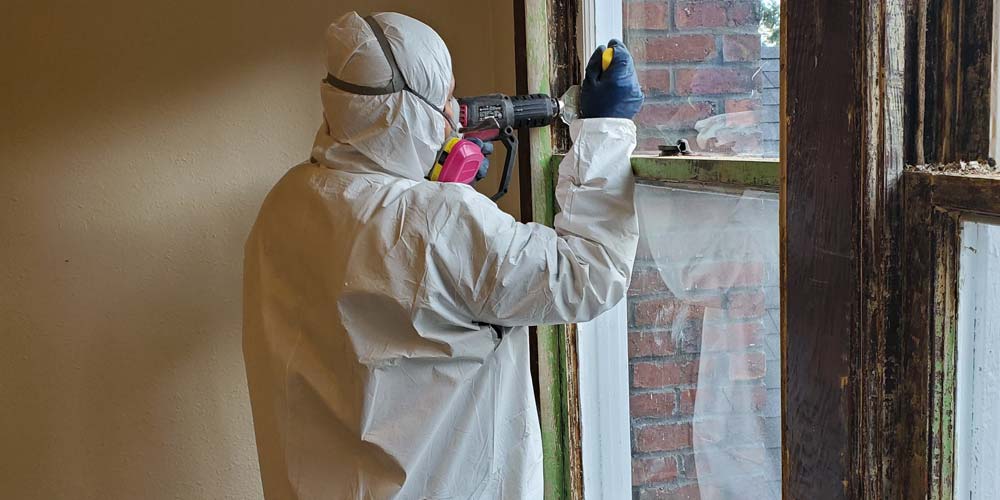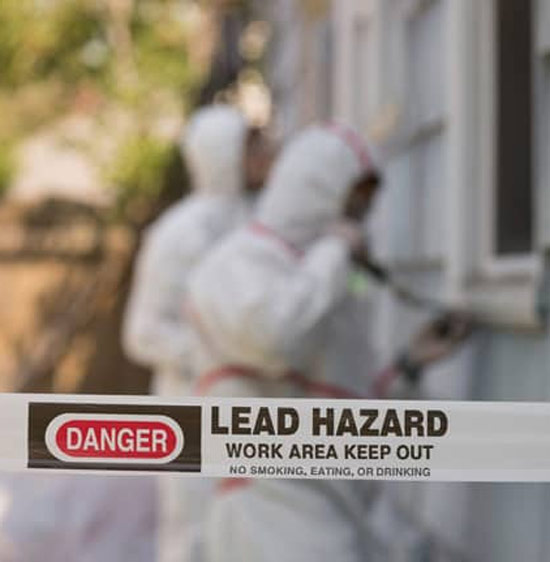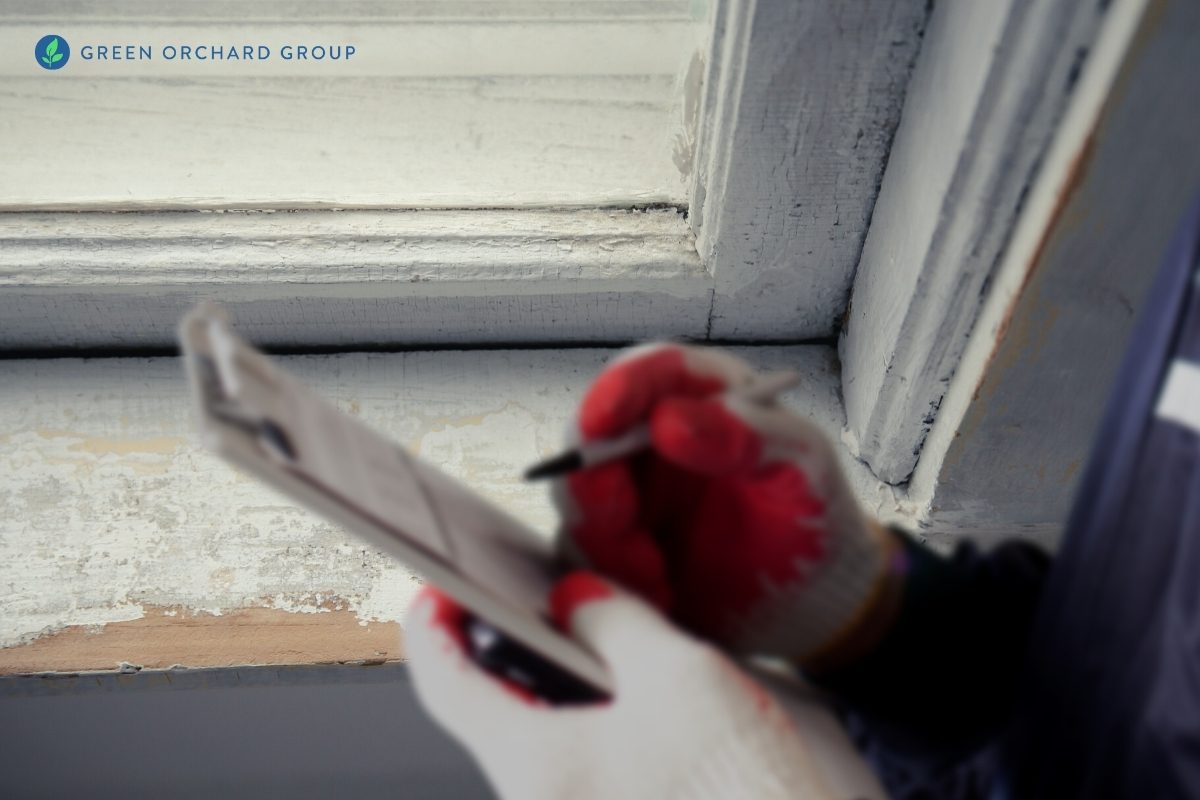Comprehensive Guide on Effective Lead Offense Removal Techniques
In the realm of environmental security, addressing lead infractions requires a careful and organized strategy. This extensive overview starts by highlighting the important first actions of determining lead threats through sophisticated analysis and screening approaches. Strategies such as XRF analysis and dust clean sampling are vital in determining contamination resources. The overview specifies on the value of adhering to stringent safety methods throughout the removal process, consisting of the usage of appropriate PPE and isolating influenced locations. The subsequent areas assure to review post-removal verification and preventive strategies, making certain long-lasting safety and conformity. Discover the complex details that make these strategies not simply effective yet necessary.
Identifying Lead Hazards
Recognizing lead hazards is an essential very first action in mitigating the risks related to lead direct exposure. Lead, a toxic metal, can be existing in numerous environmental mediums, consisting of paint, dirt, water, and dirt. It poses severe health and wellness threats, particularly to kids and expectant females, resulting in neurological damages and developmental hold-ups. Precise identification of prospective lead resources is crucial for effective remediation.
The first stage in recognizing lead hazards involves understanding common lead sources within the built environment. Structures built prior to 1978 are specifically at risk as a result of the widespread usage of lead-based paint throughout that duration. Furthermore, soil contamination can occur from deteriorating exterior paint, commercial exhausts, or historic use leaded gasoline.
Another substantial resource is lead piping and pipes fixtures, which can leach introduce alcohol consumption water. Durable goods such as playthings, porcelains, and imported products may additionally have unsafe lead degrees. Significantly, work environments and leisure activities entailing lead can track pollutants into homes.
Analysis and Testing
When addressing lead dangers, effective evaluation and screening are critical. First analysis usually entails a visual assessment to identify prospective lead sources, such as weakening paint or infected dirt.

Dust wipe tasting is an additional crucial method, specifically in household setups. By collecting samples from floors, windowsills, and other surface areas, this approach gives understandings into potential exposure dangers. Dirt testing around building boundaries is necessary to find lead contamination that can posture threats, specifically to children.
Safe Removal Treatments
Upon finishing detailed analysis and screening, carrying out risk-free removal procedures is the following critical stage in resolving lead threats. This procedure guarantees that lead-contaminated materials are effectively and securely gotten rid of, lessening her explanation danger to both workers and residents. The initial step includes isolating the damaged location using plastic sheeting and correct securing techniques to avoid the spread of lead dirt.
Workers must wear proper personal safety devices (PPE), consisting of respirators, handwear covers, and non reusable coveralls, to reduce direct exposure. Utilizing specialized tools and damp techniques, such as damp sanding or using HEPA-filtered vacuums, decreases the diffusion of lead bits. It is essential to stay clear of dry fining sand or rough blowing up, as these techniques can produce harmful lead dirt.
Waste disposal is an additional vital component; all polluted products should be firmly gotten and labeled according to EPA and regional regulations. Furthermore, thorough cleaning of the workspace with HEPA vacuums and website link damp wiping ensures the removal of recurring lead bits.
Post-Removal Confirmation

Confirmation of successful lead removal, understood as post-removal verification, is crucial to make certain the security and habitability of the remediated location. This assessment guarantees that all recognized sources of lead have actually been addressed and that no noticeable indicators of contamination continue to be.
Adhering to the aesthetic examination, environmental sampling is performed. This entails gathering dirt, dirt, and occasionally water examples from the remediated area. Certified labs analyze these samples to gauge lead degrees, guaranteeing they fall below the safety limits developed by regulative bodies such as the Environmental Protection Agency (EPA)
Additionally, air top quality testing may be performed to spot air-borne lead bits, particularly in cases where extensive lead-based paint elimination or remodelling has actually happened. The results of these examinations supply quantitative information verifying that the lead degrees are within allowable limitations.
Ultimately, post-removal confirmation functions as a vital checkpoint, validating the efficiency of the lead abatement initiatives and safeguarding the wellness of residents Visit This Link and site visitors.
Preventive Actions and Maintenance

A vital safety net includes using lead-safe licensed contractors for any kind of restoration, repair, or painting tasks. These professionals are learnt techniques that reduce lead dirt and particles. Additionally, keeping painted surfaces to stay clear of chipping or peeling is necessary, as weakening paint can release lead fragments right into the environment.
Educational efforts targeting residential property proprietors and occupants regarding the dangers of lead and the importance of reporting any prospective hazards can additionally improve preventative efforts. Routine cleaning using HEPA vacuums and wet mopping methods can dramatically reduce lead dust accumulation.
Final Thought
In recap, reliable lead offense elimination demands a thorough approach encompassing comprehensive assessment, precise testing, and strict removal procedures. Ensuring safety through proper seclusion and individual safety devices stays vital. Post-removal confirmation using environmental tasting and air top quality screening corroborates compliance with recognized safety standards. In addition, recurring assessments and maintenance are necessary to reduce future lead hazards, therefore guarding public health and wellness and guaranteeing sustained conformity with governing needs.